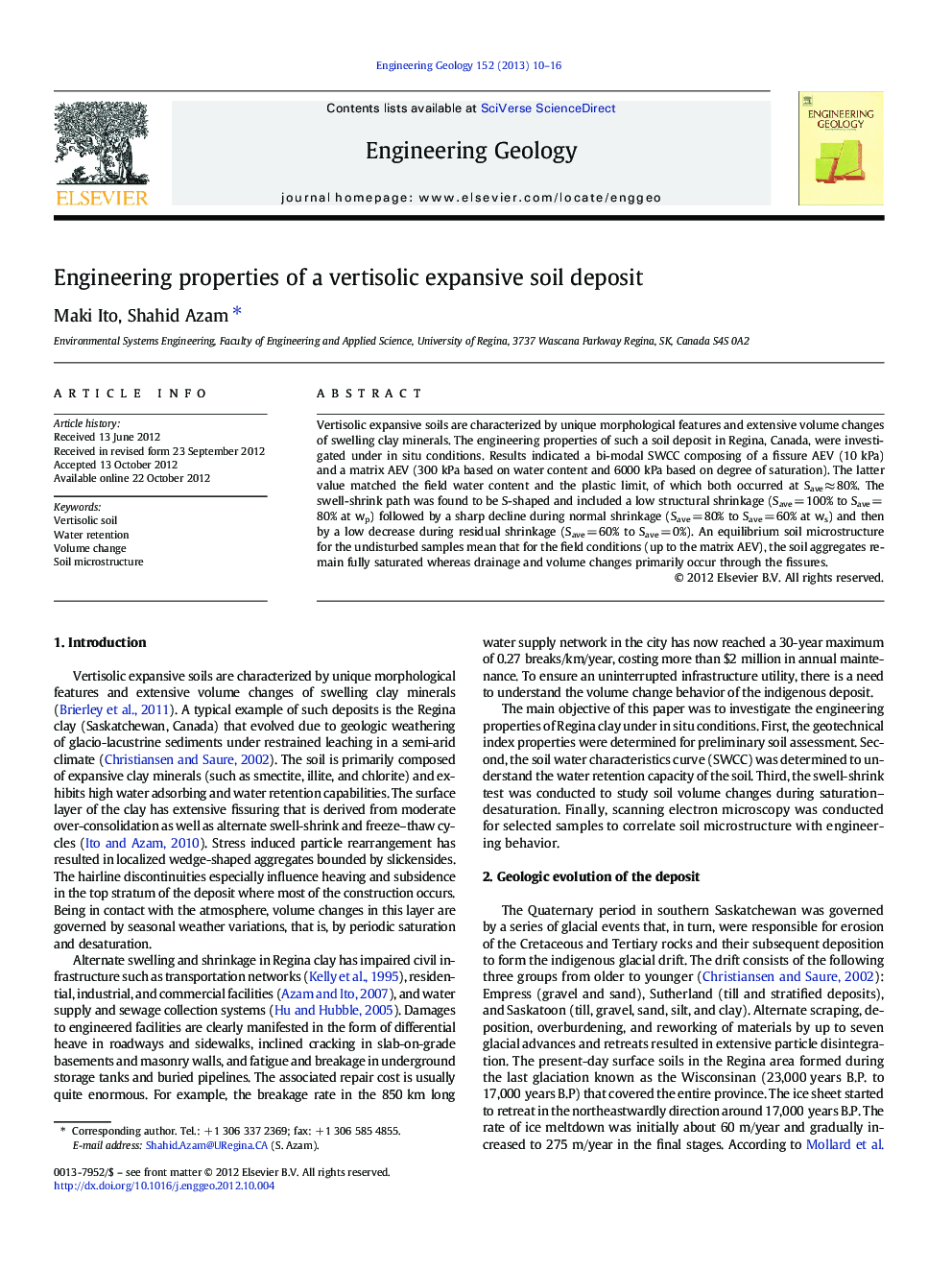| کد مقاله | کد نشریه | سال انتشار | مقاله انگلیسی | نسخه تمام متن |
|---|---|---|---|---|
| 4743858 | 1359341 | 2013 | 7 صفحه PDF | دانلود رایگان |
Vertisolic expansive soils are characterized by unique morphological features and extensive volume changes of swelling clay minerals. The engineering properties of such a soil deposit in Regina, Canada, were investigated under in situ conditions. Results indicated a bi-modal SWCC composing of a fissure AEV (10 kPa) and a matrix AEV (300 kPa based on water content and 6000 kPa based on degree of saturation). The latter value matched the field water content and the plastic limit, of which both occurred at Save ≈ 80%. The swell-shrink path was found to be S-shaped and included a low structural shrinkage (Save = 100% to Save = 80% at wp) followed by a sharp decline during normal shrinkage (Save = 80% to Save = 60% at ws) and then by a low decrease during residual shrinkage (Save = 60% to Save = 0%). An equilibrium soil microstructure for the undisturbed samples mean that for the field conditions (up to the matrix AEV), the soil aggregates remain fully saturated whereas drainage and volume changes primarily occur through the fissures.
► Engineering properties of a typical vertisolic expansive soil deposit are presented.
► SWCC has two air entry values related to drainage through fissures and soil matrix.
► S-shaped swell-shrink path includes structural, normal, and residual shrinkage.
► Soil aggregates in the field remain saturated and drainage occurs through fissures.
Journal: Engineering Geology - Volume 152, Issue 1, 18 January 2013, Pages 10–16
